Our Creative Producer, Amaya Jeyarajah Dent, reflects on the experience of working closely with show creators Nat Randall and Anna Breckon, Engagement Producer Maria Cuervo, and the Young Vic team.
“I hadn’t anticipated working the full 30-hour stretch, but that’s what ended up happening. Once our multi-handed machine geared into action on show day, starting at around 11am on Friday 19 May, it felt bigger than the sum of our parts and we felt unstoppable.
That feeling lasted until about 2am, and then wobbled slightly. 2-6am is the hardest, things feel slightly off kilter, the lights a bit too bright, and frankly the queue outside far too big. As the sun rose, so did our spirits and new energy entered the room in the form of participants who had slept, bringing a fresh optimism (and a fresh set of nerves) with them.
The live show on 19/20 May was just one stop on the journey that many of our participants had been on with us for some four months. Back in February, we hosted a series of open workshops at the Young Vic. At the time, The Second Woman was yet to be announced, so people turned up for the opportunity to learn some new skills from our brilliant drama facilitator, meet new people, and potentially take part in a production happening in May in the Young Vic main house.
And so we began, on a journey that was by no means straightforward. This journey was a bumpy one at times, and I believe the thing that we kept encountering was the tension that exists between the unexpected and good access. The unexpected tends to be at the heart of great art, particularly in the live performance field. Good accessibility, amongst other things, should include clear detailed communications and advance notice – in short, doing away with the unpredictable so that an experience is possible to navigate for a broad range of people with infinite different needs.
But how do you tell people what to expect when you simply don’t know everything that’s going to happen? How do you hold surprising details safely? What do you mention and what do you leave out? In rehearsals we were initially telling participants to wear something they didn’t mind getting messy, but that meant that people weren’t surprised by, were even anticipating, the noodles being thrown their way. It was denting the freshness of the scene, the mischief, or the venom that Ruth was working hard to create. If you aren’t revealing everything, when does holding back on surprising detail become unethical?”
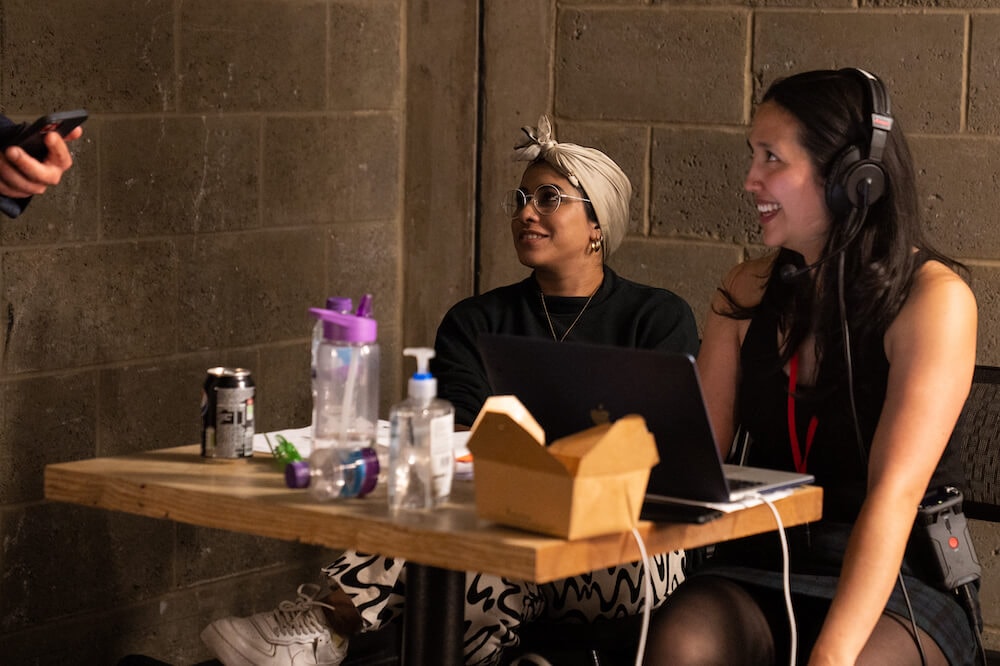
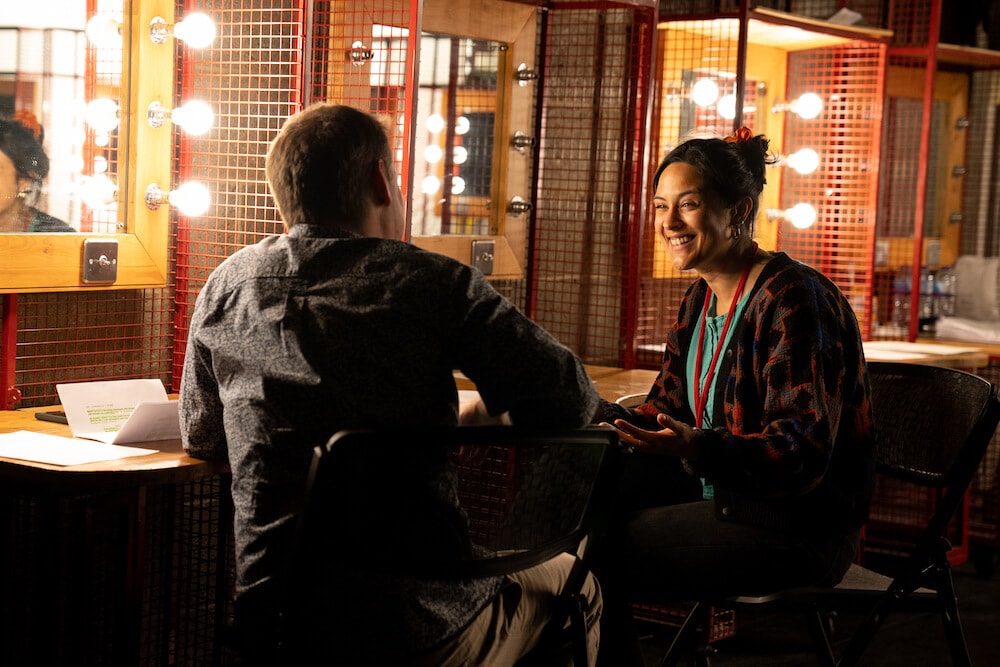
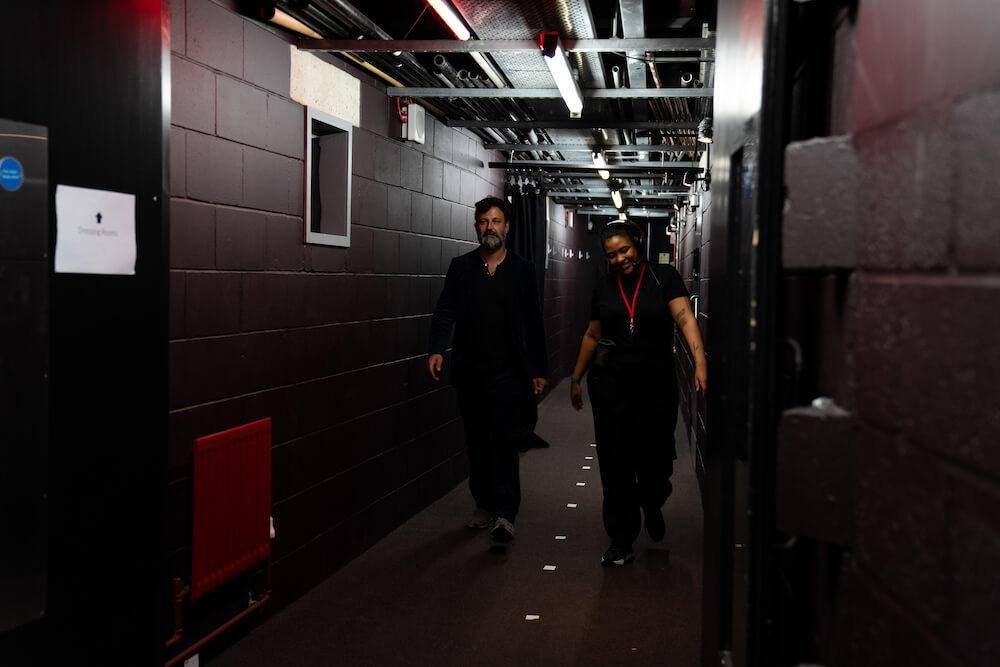
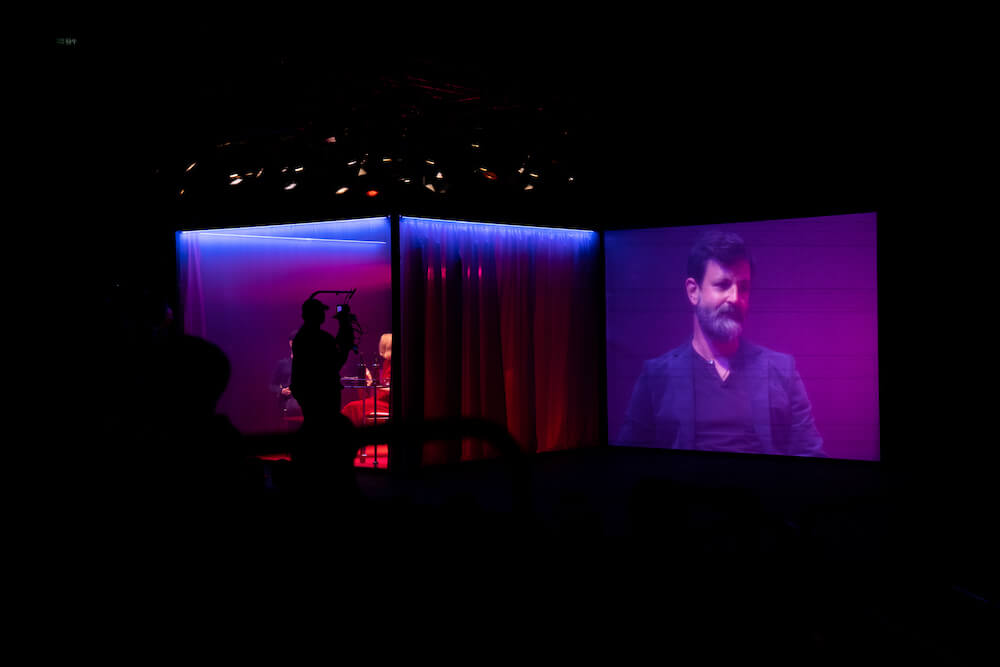
“These were the innate tensions that we, as a whole team, navigated within The Second Woman. That electricity that you felt in the auditorium, and the gasps of disbelief? They were real. You can’t fake those dynamics – the tensions, the awkwardness, the unexpected. The spark of two strangers meeting intimately for the first time in front of a 400 strong audience on the other side of the small cloth box that holds them. The truth of the performance is that no one really knew what would play out between Virginia and the next Marty, not least the two of them. The unknown remained the only real constant – and therein lies the show’s magic. But the unknown is notoriously hard to prepare for. And it’s hard to take care in the unknown.
Our job then was to create a compassionate and supportive framework to contain the electricity that would crackle on stage between those two complete strangers. To acknowledge that everyone gets received on that stage differently, that privileges exist for some that aren’t afforded to others, that safety means different things for different people, and that good care looks different to every single one of us depending on what we are bringing.
Our job then was to factor that good care into our process as best we could. To prepare all 100 participants with honesty and generosity in a non-directive way, to meet them afterwards, to celebrate them for their participation in an intense and surreal experience, and to create the opportunity for reflection and post-show processing. And to acknowledge that this was on the edge – yes, as a piece of participatory performance art, risk was present. This was an exercise in trusting a stranger, the Virginia or the Marty playing opposite you, to take care of you. Faith and risk are implicit, and so too is care.
And so the care that underpins The Second Woman became a hugely detailed piece of work, artist-led, and contributed toward by many care-orientated peers and professionals. We held an open session for participants to drop into, to ask questions, express anxieties, sense check outfit choices and seek clarity. Nat and Anna, the show’s brilliant creators, got to meet and speak one-to-one with around a third of the shows’ participants in this space, which was deeply meaningful.
We held access rehearsals for those taking part who felt that they could benefit from experiencing the space in advance, checking the brightness of the lights, or walking through the choreography. We carefully created notes that Nat and Anna would relay to Ruth at the right moment in the breaks in the show, so that a dance scene wouldn’t get too physical if someone had an injury or a physical disability.
Nat and Anna created directive tools that could be utilised by participants, or indeed by Ruth if they wanted to avoid any physical contact or intimacy, or if they needed to make a speedy exit for any reason. We debated which details of possible eventualities we would or wouldn’t give to participants in advance for many, many hours. It changed throughout the creative process and I’m not sure we ever found the perfect balance.
Every five-to-eight-minute slot might have looked fleeting and simple but was underpinned by many hours of detail-orientated organisation, rehearsal and limitless patience, generosity, good will and excitement from all 100 participants, and of course from Ruth. How strange that they never met again outside of those intense minutes shared on stage! If any of us had the capacity, time or budget, we’d organise the worlds’ best wrap party with the cast of 101 to debrief on all the madness of that 24 hours.”
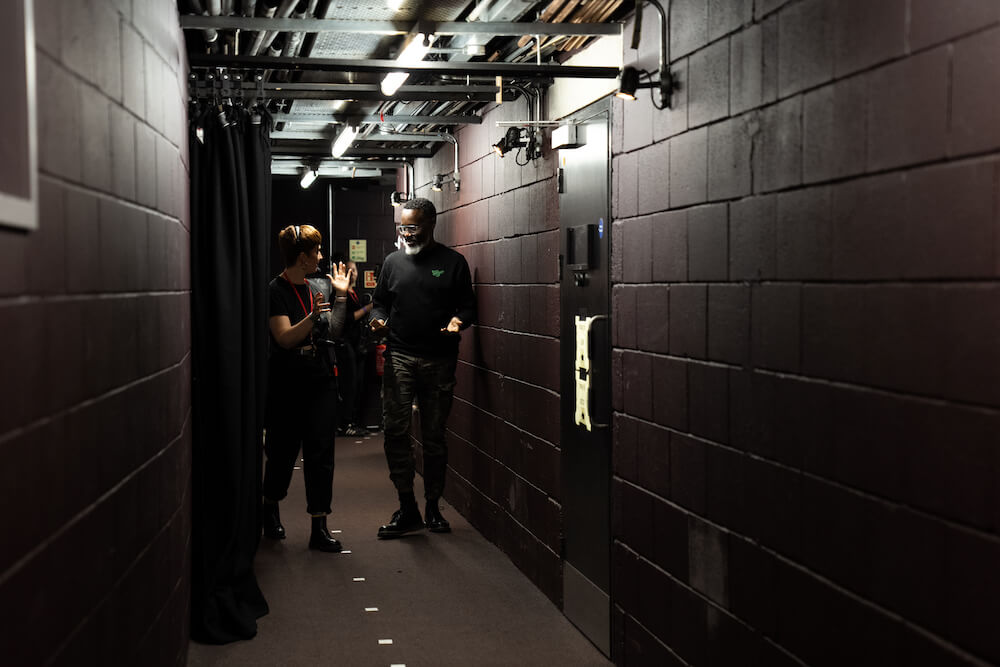

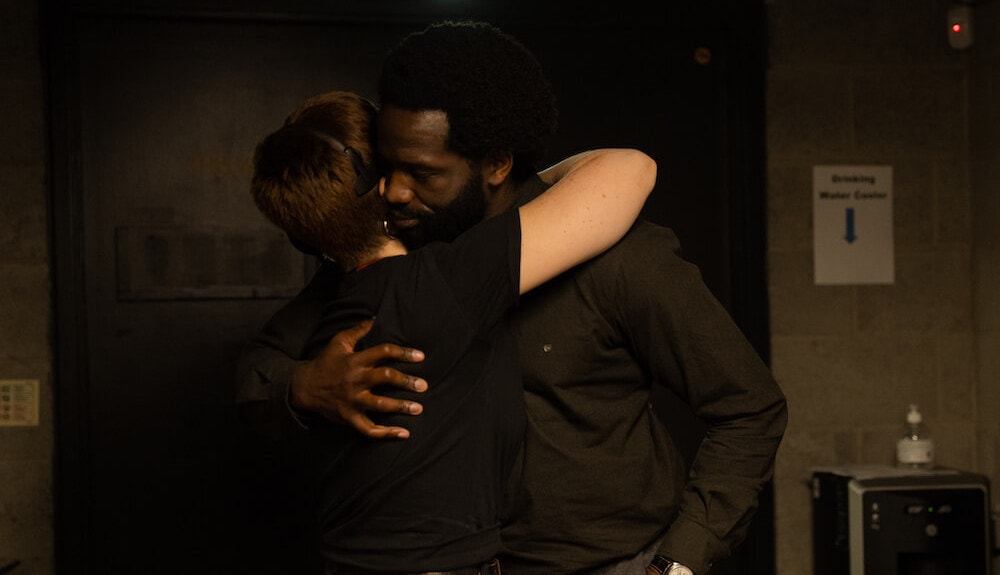
“Shout out to the participation team, the most jovial, kind and capable bunch I know, who held the back of house of The Second Woman like it was their own welcoming living room and with total precision, when at times it was far too early or late to be at work.
Support from The Artist Wellbeing Company was invaluable. They helped us prepare for holding the checkout space every person would enter post-performance. Participants could use this space as they wished. In general, they entered full of adrenaline. Laughs were had, tears were shed, frustrations expressed, nerves dispelled, comparisons made, disbeliefs raised and many, many celebrations were eaten. I did a stint in here in the early hours of Saturday morning and was moved and reset by the honesty and joy I found in this space amongst such a varied array of humans. We displayed a QR code on the wall so that everyone could leave with a grounding meditation to do when they got home.
Post-performance, The Artist Wellbeing Company held a series of online spaces for reflection and connection, for participants as well as team members to attend. Since being part of The Second Woman is potentially a somewhat isolating experience, and certainly an unusual one, we wanted these sessions to provide a space of connection and meaning making with others who’d had a similar, yet unique, experience.
For me, an unlocking moment was when one of our team said just before the show, “You know it won’t be perfect, it will be imperfect, but it will also be alright. We’ll do our best and we’ll learn things.” And wasn’t that the truth.
I won’t work 30 hours straight for many productions, and I can’t pretend it was perfect, but I believe we did the best that we could. I’m proud, so proud, of the team of womxn we built and the joy we created together, with Nat, Anna and Ruth at our helm.”
Author
Amaya Jeyarajah Dent
— Interim Artistic Director & Co-CEO
Credit
Photography: Beatrice Debney